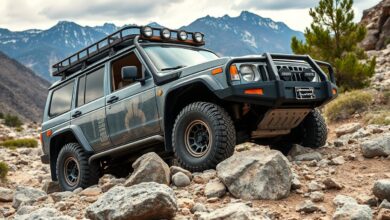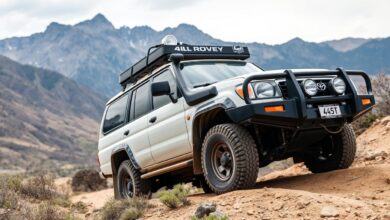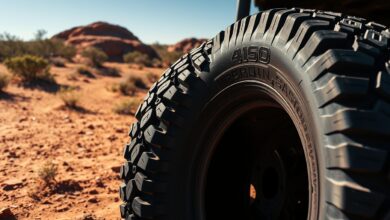The Truth About 4WD Brake Pads You Must Know
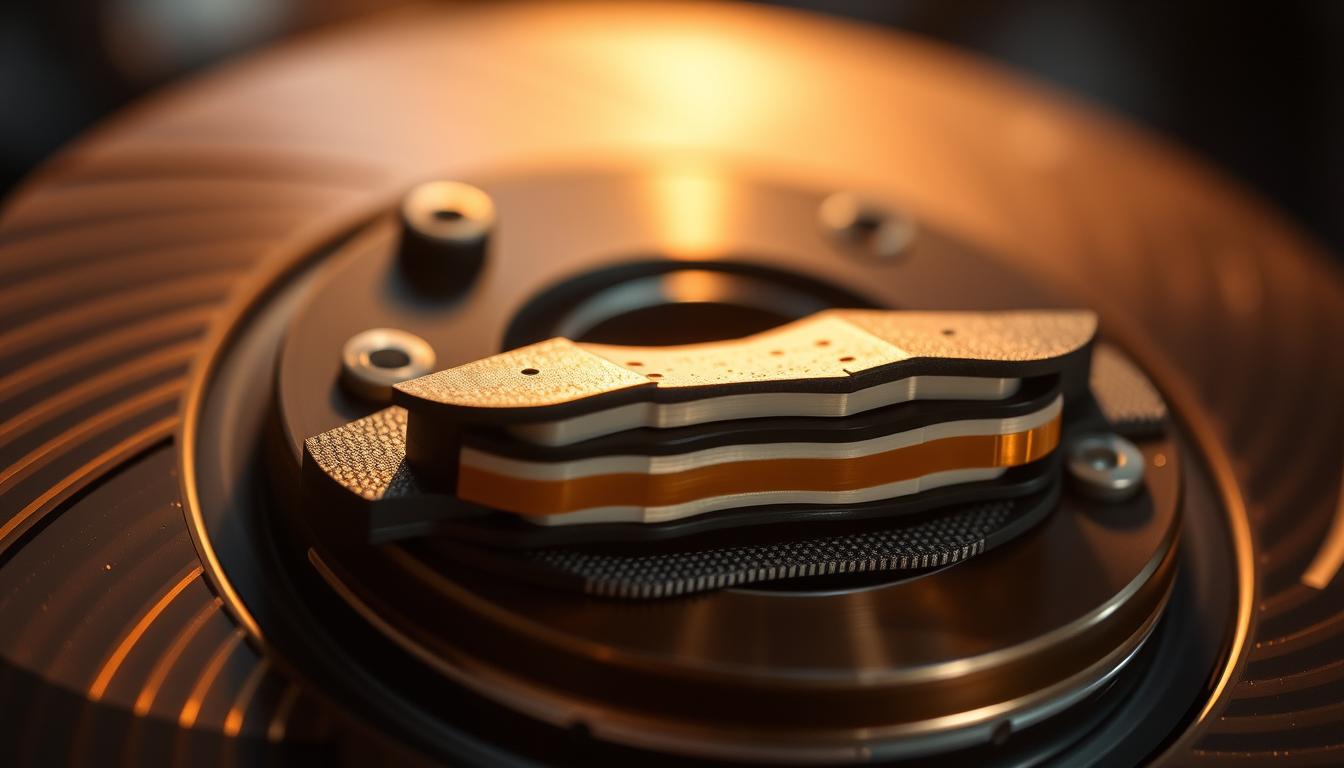
Driving a 4×4 off-road needs the right accessories. One key part is the brake pad. It’s vital for safety and performance.
Choosing high-quality brake pads boosts your drive. It adds enhanced safety and improved performance. Good brake pads are key for control and safety, on any road.
Key Takeaways
- High-quality brake pads are essential for 4×4 vehicles, off-road.
- The right brake pads improve safety and performance.
- Quality brake pads enhance your driving experience.
- Reliable brake pads keep you in control and safe.
- Good brake pads give better stopping power and efficiency.
Understanding Brake Pads: The Basics
Brake pads are key to a vehicle’s braking system. They ensure safety on the road by providing friction to stop the vehicle. This is when the brakes are applied.
What Are Brake Pads?
Brake pads are made to slow down or stop a vehicle. They press against the brake rotors. Brake pads are made from different materials, each with its own benefits.
How Brake Pads Work
Brake pads work on friction. When you press the brake pedal, the pads clamp onto the rotor. This creates friction that slows the vehicle down. The quality and type of brake pads affect how well they work.
“The right brake pads can make all the difference in your vehicle’s braking performance. It’s not just about stopping; it’s about control and safety.”
Types of Brake Pads Available
There are many types of brake pads, like ceramic, semi-metallic, and organic. Each has its own strengths and weaknesses.
| Type of Brake Pad | Characteristics | Suitability for 4×4 Vehicles |
|---|---|---|
| Ceramic Brake Pads | Less noise, less dust, and better heat dissipation | Moderately suitable; good for everyday driving |
| Semi-Metallic Brake Pads | Better performance under heavy loads, more durable | Highly suitable; ideal for off-roading and heavy-duty applications |
| Organic Brake Pads | Quieter operation, less wear on rotors | Less suitable for extreme conditions; better for light-duty use |
Knowing about different brake pads helps owners choose the right one. This is important for 4×4 vehicles that face tough conditions.
The Importance of Quality in Brake Pads
Quality brake pads are key for your 4×4’s safety and performance. They offer better braking, which is vital for off-road driving. This is because off-road driving puts more stress on the brakes.
Performance and Safety Benefits
Top-notch brake pads bring many performance and safety benefits. They help your vehicle stop faster and more efficiently. This is super important when you’re driving off-road and might hit something suddenly.
Off-road brake pad benefits also include being more durable and able to handle extreme temperatures. This means your brakes are more reliable during tough off-road trips.
| Benefits | High-Quality Brake Pads | Standard Brake Pads |
|---|---|---|
| Stopping Power | Excellent | Good |
| Durability | High | Moderate |
| Heat Resistance | Excellent | Good |
How Quality Affects Longevity
The quality of brake pads affects how long they last. Long-lasting 4×4 brake pads are made to handle off-road driving’s harsh conditions. They can stand up to extreme temperatures, dust, and moisture.
While high-quality brake pads might cost more at first, they save you money in the long run. They need less maintenance and keep you safer. Choosing the right brake pads means your 4×4 will last longer and perform better.
Signs You Need New Brake Pads
It’s important to know when your 4×4’s brake pads need replacing. Worn-out pads can make braking less effective and increase stopping times. This could lead to accidents.
Warning Signs to Watch For
There are several signs that your brake pads might be worn out. These include:
- Spongy Brake Pedal: A soft or spongy brake pedal can be a sign of worn brake pads or air in the brake system.
- Vibrations: If your vehicle vibrates when you press the brake pedal, it could indicate uneven brake pad wear.
- Dashboard Warning Lights: Modern vehicles often have dashboard warning lights that illuminate when there’s an issue with the brake system.
Sound Indicators
Unusual sounds can also tell you if your brake pads are worn. Listen for:
- Squealing or Squeaking Noises: High-pitched sounds when you apply the brakes often indicate worn brake pads.
- Grinding Noises: A grinding sound suggests that the brake pads are severely worn, and metal is grinding against metal, which can cause significant damage.
Performance Issues
Performance issues are also important to watch for. These include:
- Increased Stopping Distance: If your vehicle takes longer to stop than usual, it could be a sign of worn-out brake pads.
- Braking Unevenness: If your vehicle pulls to one side when braking, it may indicate uneven brake pad wear.
| Signs | Description | Action Required |
|---|---|---|
| Spongy Brake Pedal | Brake pedal feels soft or spongy | Inspect brake pads and system |
| Squealing/Squeaking Noises | High-pitched sounds when braking | Check brake pad thickness |
| Increased Stopping Distance | Vehicle takes longer to stop | Inspect and replace brake pads if necessary |
Regularly checking your brake pads is key to keeping your 4×4 safe. Reliable brake pads are vital for your vehicle’s safety and performance.
Material Matters: What to Look For
For 4×4 owners, brake pad material is key. It affects stopping power, wear on other parts, and noise. Each material has its own strengths and weaknesses.
Ceramic Brake Pads
Ceramic pads are quiet and make less dust. They’re a mix of ceramic fibers and other stuff. They’re great for a quiet ride and less mess. But, they might not handle extreme heat or heavy loads as well.
- Advantages: Quiet, less dust, smooth braking
- Disadvantages: May not perform well under extreme conditions
Semi-Metallic Brake Pads
Semi-metallic pads have metal fibers and other stuff. They’re top for heat and braking, perfect for heavy use and fast driving. But, they can be louder and dustier than ceramic pads.
“Semi-metallic brake pads are ideal for drivers who need high-performance braking capabilities, even in tough conditions.”
- Advantages: Excellent heat dissipation, high-performance braking
- Disadvantages: Noisier, more dust production
Organic Brake Pads
Organic pads, or NAO pads, use rubber, glass, and resin. They’re quieter and cleaner than metal pads. But, they wear out quicker and brake less effectively.
- Advantages: Quieter, less dust
- Disadvantages: Shorter lifespan, less effective braking
Choosing the right brake pads for your 4×4 depends on your driving, load, and what you prefer. Knowing each material’s traits helps you pick the best for your needs.
Installation: DIY or Professional Help?
Installing brake pads on a 4×4 vehicle is a big decision. You must decide if you should do it yourself or get a professional. This choice depends on your mechanical skills, the job’s complexity, and the risks of doing it wrong.
Pros and Cons of DIY Installation
Doing it yourself can save money and teach you a lot. But, it also has risks like safety issues from bad installation. You need to think about:
- Your level of mechanical expertise
- The availability of the right tools and equipment
- Understanding the specific requirements of your 4×4’s brake system
DIY installation is best for those with experience and the right tools. But, it’s not for everyone, mainly if your brake system is complex.
When to Seek a Professional
If you’re not sure about installing brake pads, get professional help. Experts have the skills, tools, and knowledge to do it right and safely. Consider:
- The complexity of your 4×4’s brake system
- The risk of expensive mistakes if installed wrong
- The value of your time and the cost of professional labor
Professional installation ensures quality and safety. This is very important for off-road vehicles that need reliable brake pads.
In conclusion, whether to DIY or get professional help for brake pad installation depends on your situation. Weighing the pros and cons will help you make a good choice. This choice is key to your 4×4’s brake system’s durability and performance.
Cost vs. Value: Is It Worth It?
For 4×4 owners, knowing the cost and value of brake pads is key. High-quality brake pads cost more but offer many benefits. These include better performance, less maintenance, and more safety.
Understanding the Price Range
The price of brake pads for 4×4 trucks varies a lot. It depends on the material, brand, and quality. You can expect to pay between $50 and $200 or more per axle for top-notch brake pads.
Here’s a quick look at the typical price range for different brake pads:
| Type of Brake Pad | Price Range per Axle |
|---|---|
| Ceramic Brake Pads | $80-$150 |
| Semi-Metallic Brake Pads | $60-$120 |
| Organic Brake Pads | $50-$100 |
Evaluating Long-Term Benefits
High-quality brake pads may cost more upfront, but they offer great long-term value. Their benefits include:
- Improved Performance: They boost your vehicle’s stopping power, even when loaded or driving on rough terrain.
- Reduced Maintenance: They last longer and need less frequent replacement, saving you money over time.
- Increased Safety: They ensure consistent and reliable braking, making your drive safer.
“Investing in high-quality brake pads is not just about spending more money; it’s about ensuring your vehicle’s safety and performance. The long-term benefits far outweigh the initial cost.”
When looking at brake pad costs and values, think about your needs and driving habits. For 4×4 truck owners who often drive off-road or haul heavy loads, the extra braking power is priceless.
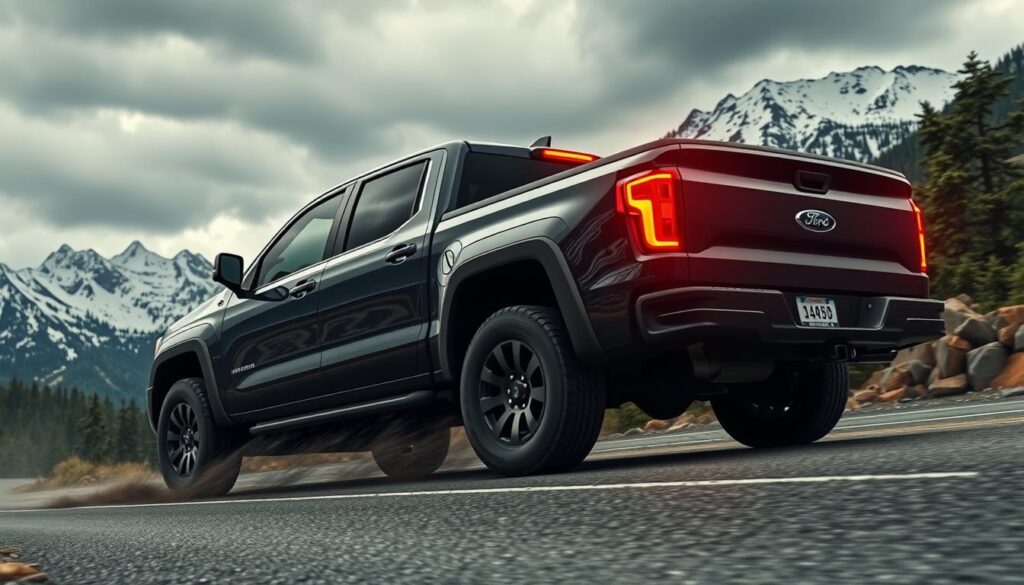
The Role of Brake Pads in Off-Roading
Off-road driving is tough on a vehicle’s brake pads. It involves driving on rough terrains, steep inclines, and uneven surfaces. Brake pads must handle heavy loads and extreme conditions.
Enhancing Control on Rough Terrain
Brake pads play a key role in controlling a vehicle on rough terrain. High-quality pads provide the friction needed to slow down or stop quickly. This is vital for avoiding accidents.
Off-road brake pads are made with special materials. Semi-metallic pads are often chosen for their durability and performance under heavy loads.
“The right brake pads can make all the difference when navigating challenging off-road terrains. They are essential for maintaining vehicle control and ensuring safety.”
Performance Under Heavy Loads
Off-road driving often means carrying heavy loads or towing trailers. This puts extra stress on the brakes. High-performance pads are designed to handle this stress, ensuring consistent braking.
| Brake Pad Type | Performance Under Heavy Loads | Suitability for Off-Roading |
|---|---|---|
| Semi-Metallic | Excellent | Highly Suitable |
| Ceramic | Good | Moderately Suitable |
| Organic | Fair | Less Suitable |
Choosing brake pads for off-road driving requires considering their performance under heavy loads. Semi-metallic pads are a top choice for their excellent performance.
Understanding brake pads’ role in off-roading helps drivers improve their vehicle’s performance and safety on rough terrains.
Maintenance Tips for Your Brake System
Keeping your brake system in top shape is key for your 4×4’s safety. Regular checks on your brake pads and parts help keep your brakes working well. This ensures you can stop safely on the road.
Regular Inspections
Checking your brake system often is a must. You should look at your brake pads, check for wear, and make sure everything is okay. It’s best to check your brake pads every 10,000 to 15,000 kilometers, or as your car’s maker suggests.
When you inspect, watch for uneven wear, glazing, or damage on pads or rotors. Spotting problems early can save you money and keep your 4×4 safe to drive.
Cleaning Brake Components
Cleaning your brake parts is also important. Dust, dirt, and brake pad residue can harm your rotors and pads, making braking less effective. Use a gentle cleaner to remove dirt, being careful not to harm anything.
Always wear protective gear and clean in a well-ventilated area when cleaning. Regular cleaning and inspections will keep your brakes in great shape and make your brake pads last longer.
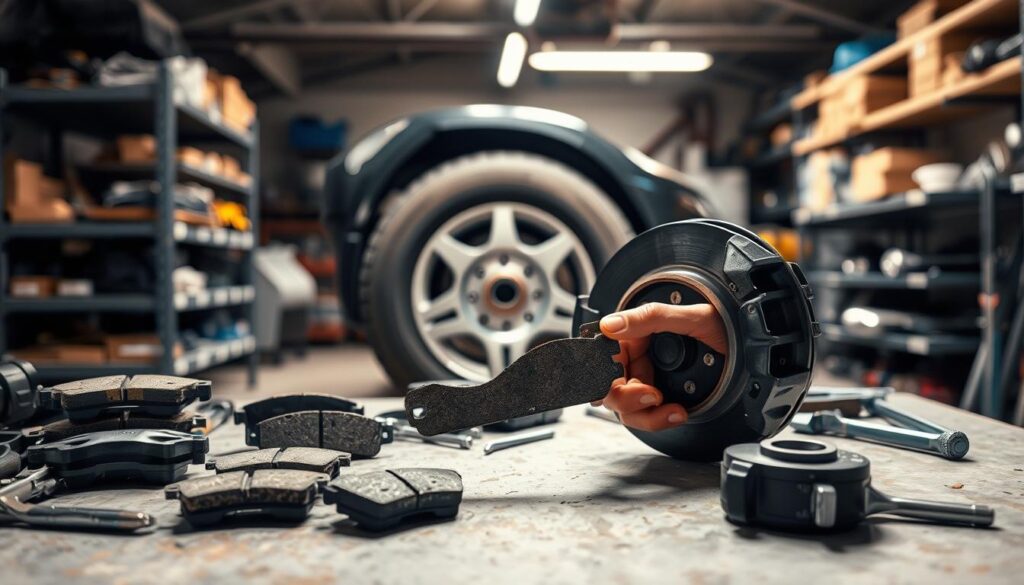
By sticking to these maintenance tips, you’ll make your 4×4’s brakes more reliable and effective. Simple checks and cleanings can keep your vehicle’s braking power at its best.
Choosing the Right Brand for Your 4×4
Finding the perfect brand for your 4×4’s brake pads is important. You need to think about performance, durability, and what other customers say.
Choosing the right high-performance brake pads is key for your vehicle’s safety. With many brands out there, it’s vital to pick one that fits your needs.
Top Brands to Consider
Many top brands make high-quality brake pads for 4x4s. Here are some to look at:
- Brand A: Known for their exceptional durability and performance in extreme conditions.
- Brand B: Offers a range of brake pads designed for various 4×4 models, with a focus on safety and reliability.
- Brand C: Provides high-performance brake pads that are engineered for optimal stopping power and minimal wear.
Customer Reviews and Recommendations
Reading customer reviews is a great way to check a brand’s brake pads. Look for feedback on performance, noise, and durability. This will help you understand a brand’s good and bad points.
By looking at top brands and customer feedback, you can make a smart choice. This way, you’ll find the best brand for your 4×4’s brake pads.
Conclusion: Making the Smart Choice
Choosing high-quality brake pads is key for 4×4 owners. It makes driving off-road safer and more fun. Knowing the value of good brake pads helps you pick the right ones for your vehicle.
Key Considerations
Look at the material, how well they perform, and how long they last. Power Stop brake kits, for example, are 30-35% better than OEM parts. They’re great for daily driving, with good performance and less dust.
You can learn more about Power Stop brake kits and their benefits on the G Exhaust blog.
Final Insights
Choosing the right brake pads for off-road driving depends on your vehicle and how you drive. Focus on quality and performance. This way, your 4×4 will handle tough terrain safely and well.
FAQ
What are the signs that indicate I need to replace my 4×4 brake pads?
Look out for squealing or grinding noises when you brake. Also, if your car takes longer to stop, or you feel vibrations, it’s time to check your brake pads. Regular checks can spot wear before it’s a big problem.
What type of brake pads are best suited for off-road driving?
Semi-metallic brake pads are great for off-road driving because they’re tough and work well under heavy loads. But, the best brake pads for your 4×4 also depend on how you drive and where you go.
Can I install new brake pads on my 4×4 myself?
You can try to put new brake pads on yourself, but it’s safer to get a pro if you’re not sure. The wrong installation can be dangerous and make your brakes less effective.
How often should I inspect my 4×4 brake pads?
It’s important to check your brake pads often to keep them working well. You should do this every 10,000 to 15,000 kilometres, or as the maker suggests.
Are high-performance brake pads worth the extra cost?
High-performance brake pads can stop your car faster and safer. They might cost more, but they can make driving better and safer in the long run. Many 4×4 owners find them worth it.
What are the benefits of using ceramic brake pads on my 4×4?
Ceramic brake pads are quiet, last longer, and make less dust. They also don’t fade as easily, which is good for towing or hauling heavy loads.
How do I choose the right brand of brake pads for my 4×4?
Look at the quality, what others say, and what experts recommend. Brands like Ferodo, Brembo, and EBC make good brake pads for 4x4s.
Can I use organic brake pads on my 4×4 for off-road driving?
No, organic brake pads aren’t good for off-road driving because they don’t last long under heavy loads. Semi-metallic or ceramic pads are better for off-road use.
How do I maintain my 4×4 brake system to ensure optimal performance?
Keep your brakes in check by inspecting them often, cleaning them, and replacing worn parts. Always follow the maker’s advice on when and how to do maintenance.

